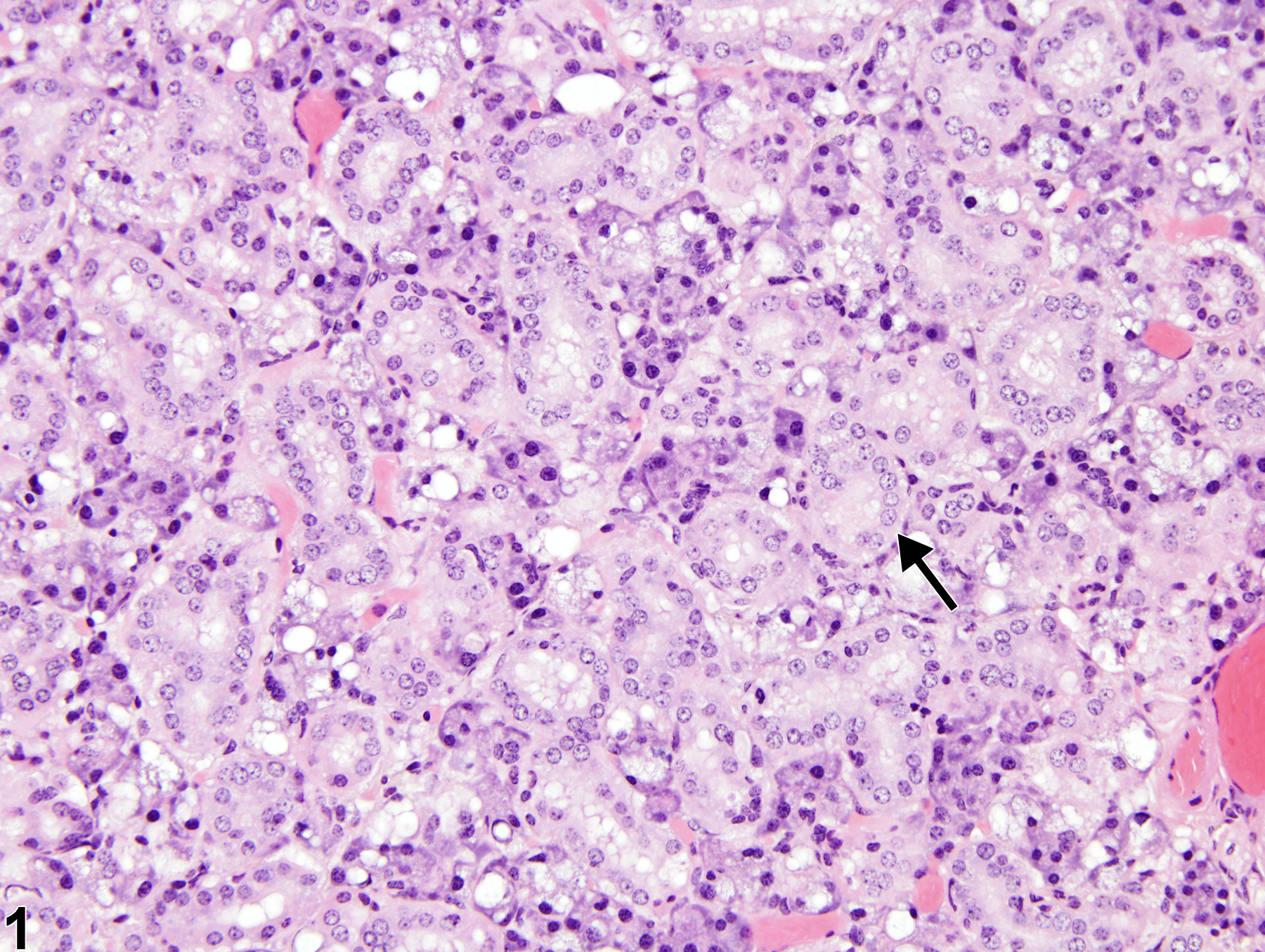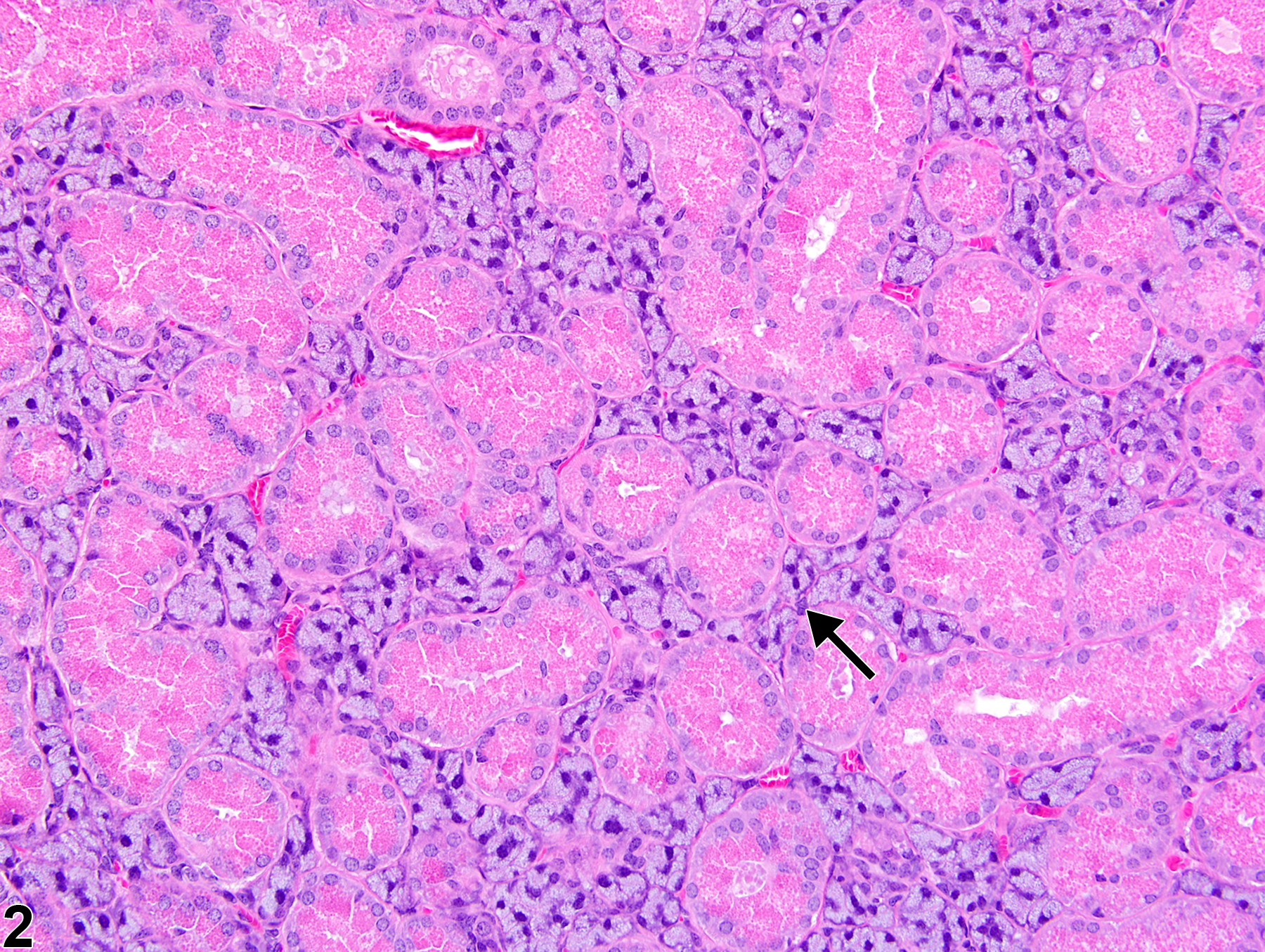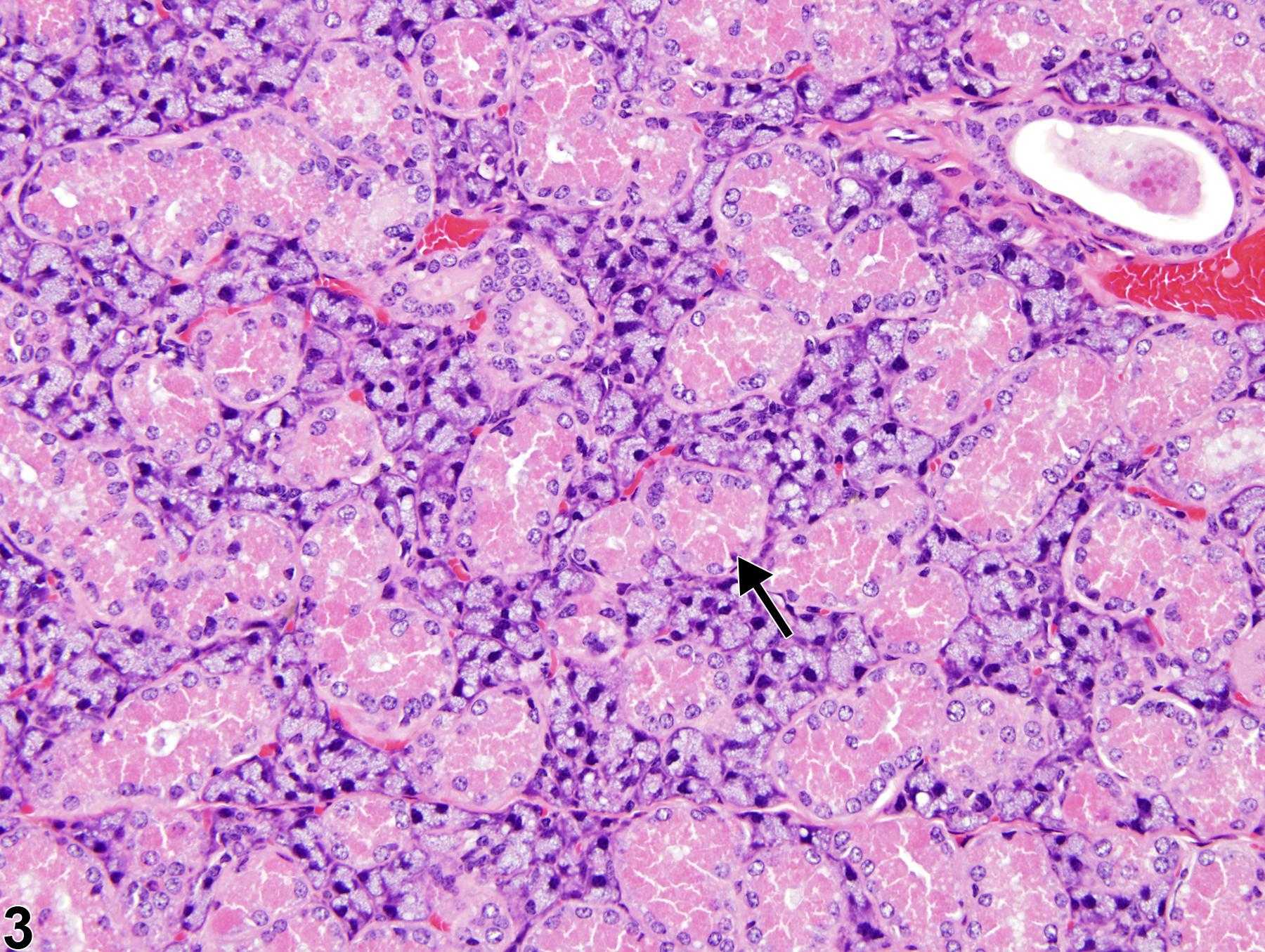Alimentary System
Salivary Gland, Submandibular, Duct - Cytoplasmic Alteration
Narrative
Botts S, Jokinen M, Gaillard ET, Elwell MR, Mann PC. 1999. Salivary, Harderian, and lacrimal glands. In: Pathology of the Mouse (Maronpot RR, ed). Cache River Press, St Louis, MO, 49-80.
Seely JC. 1999. Kidney. In: Pathology of the Mouse (Maronpot RR, ed). Cache River Press, St Louis, MO, 207-234.

Normal submandibular salivary gland in a female B6C3F1 mouse from a chronic study. The arrow indicates a convoluted salivary gland duct.




